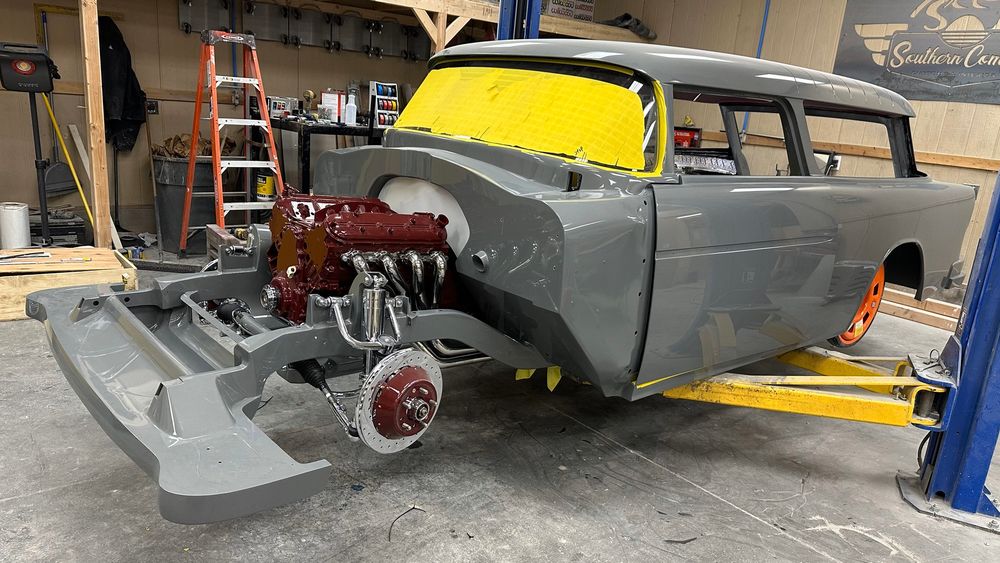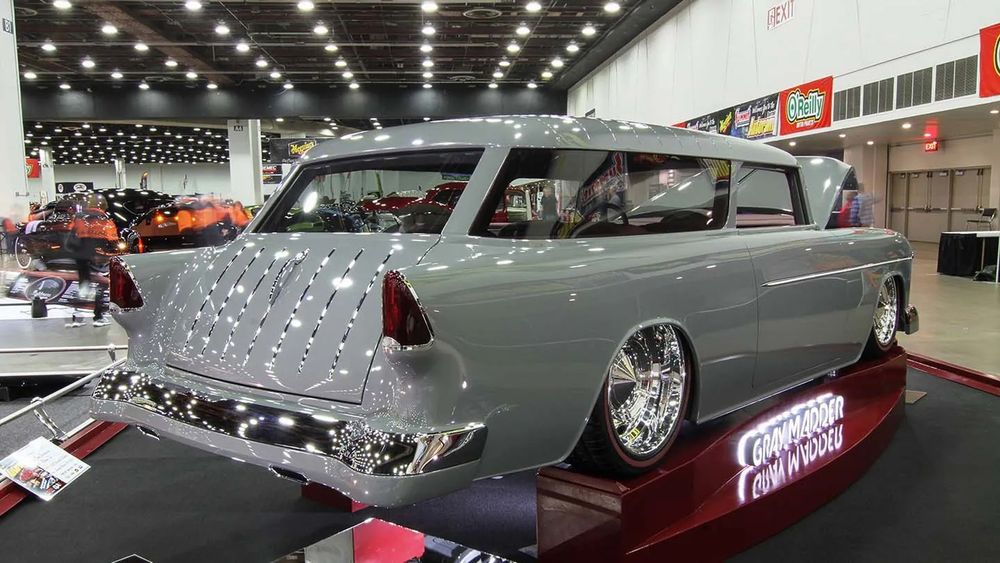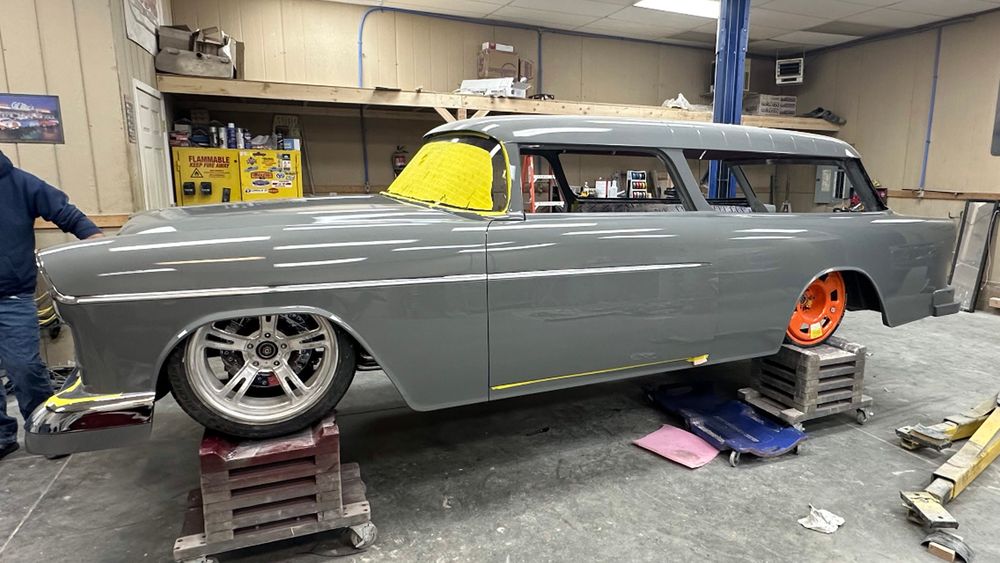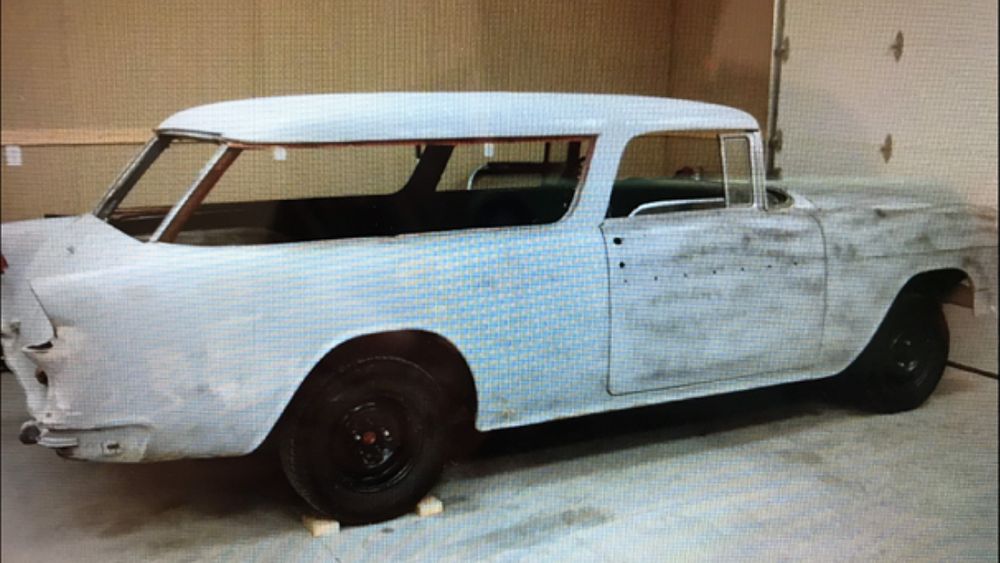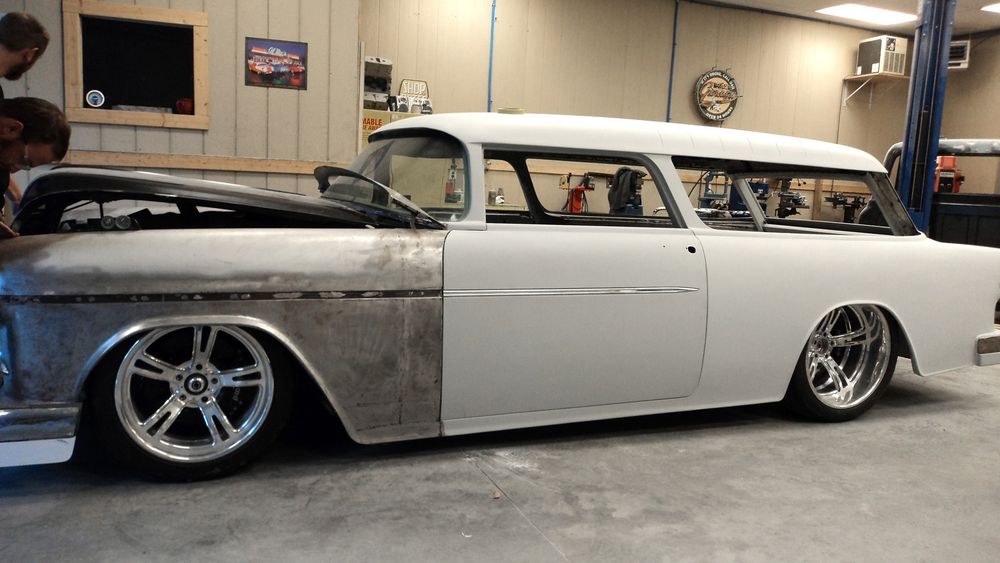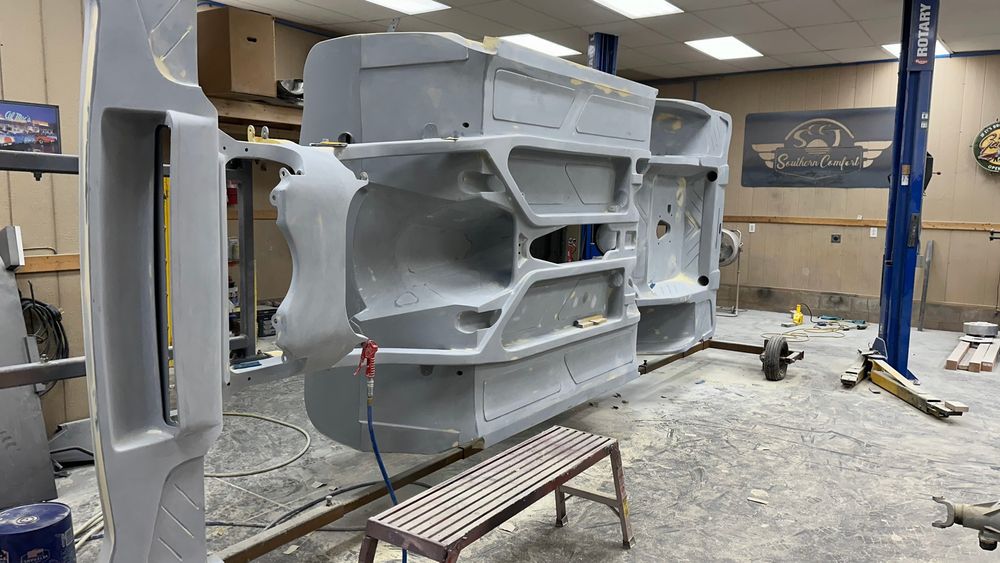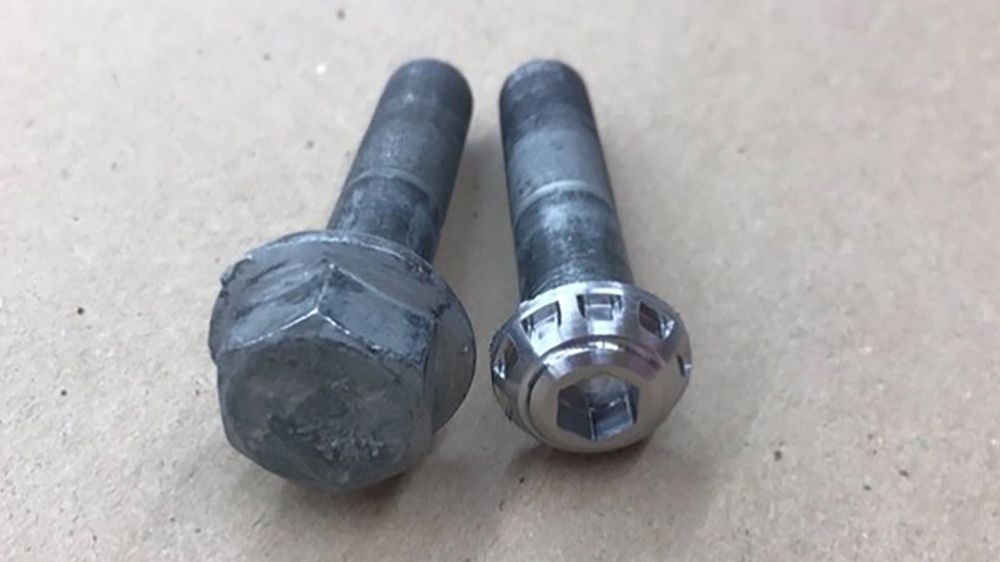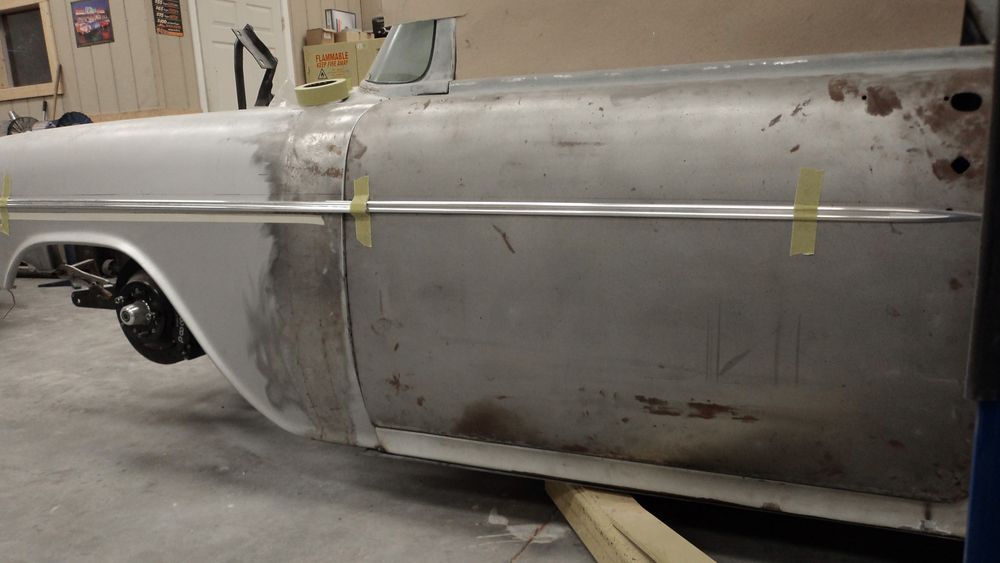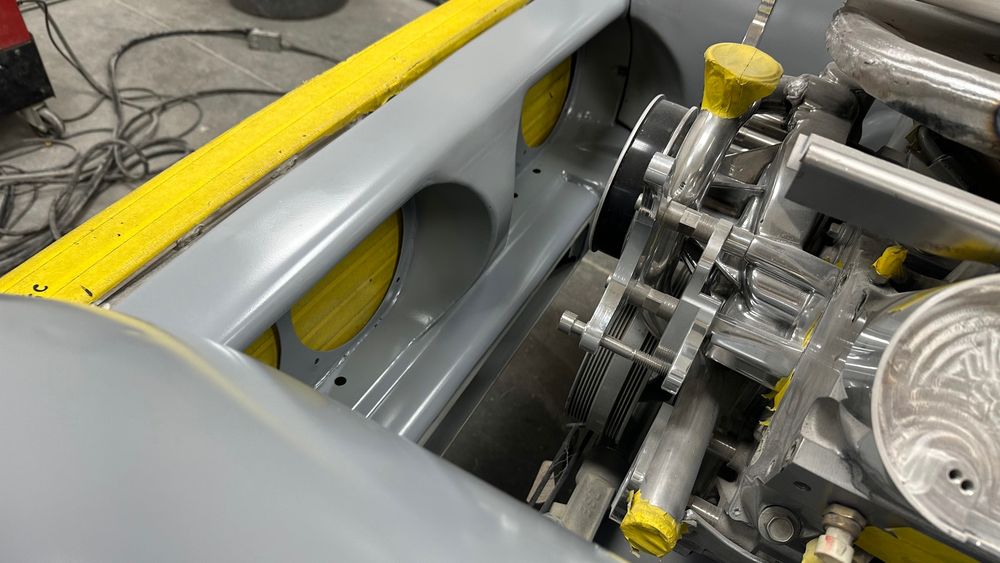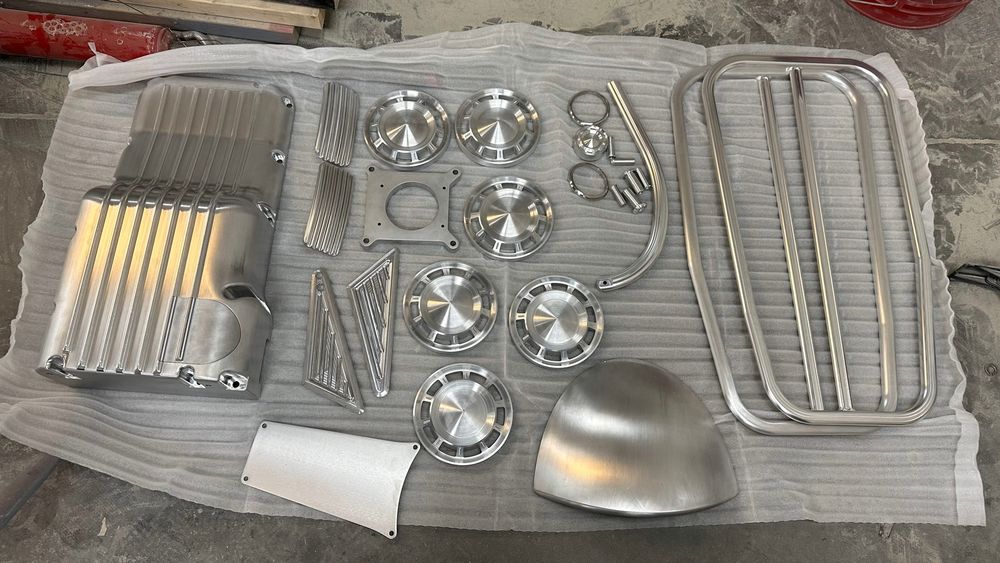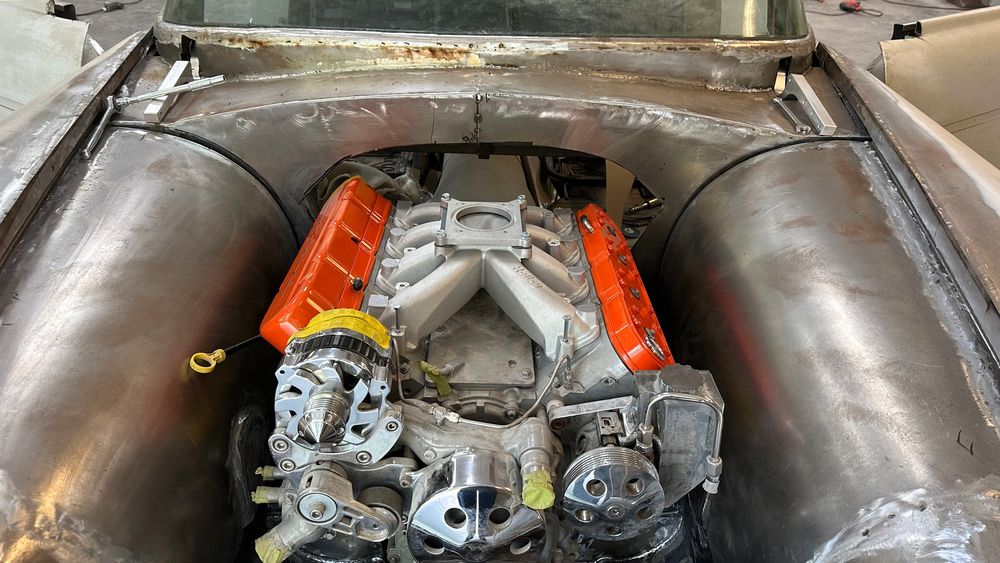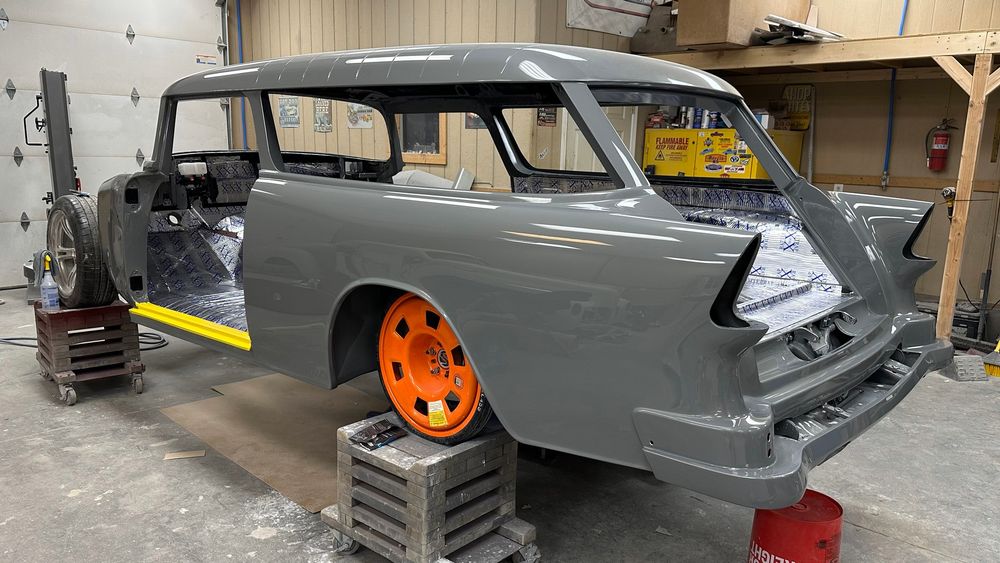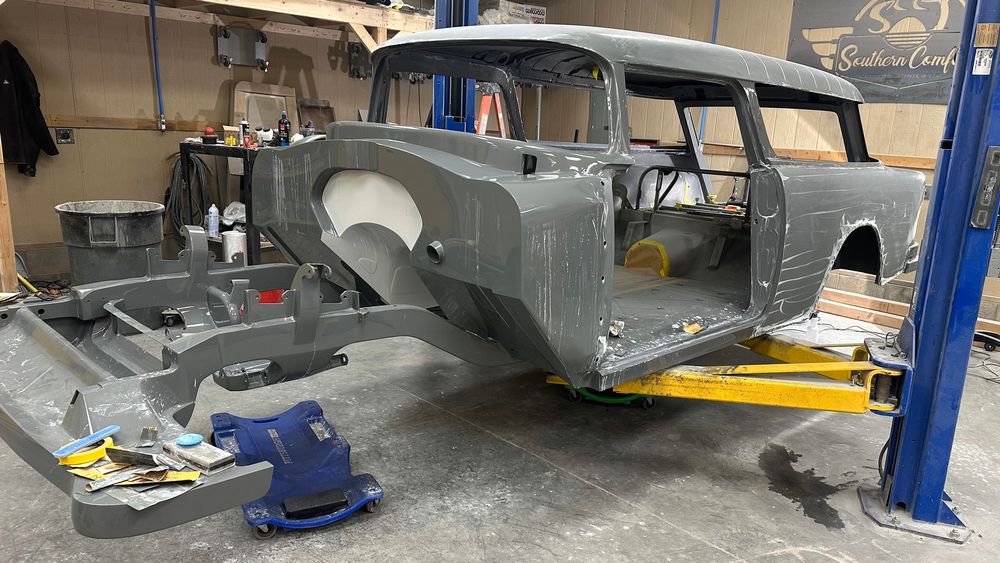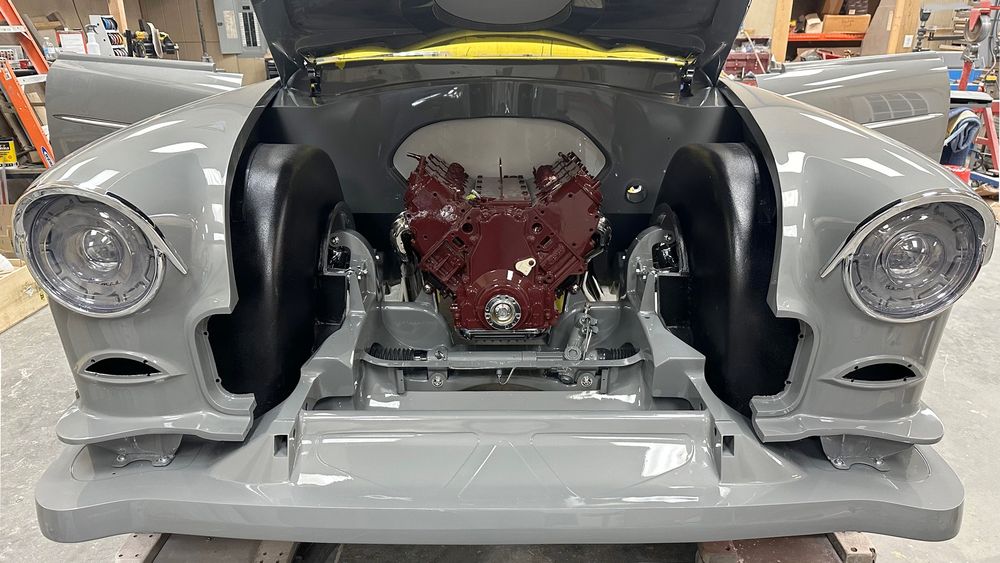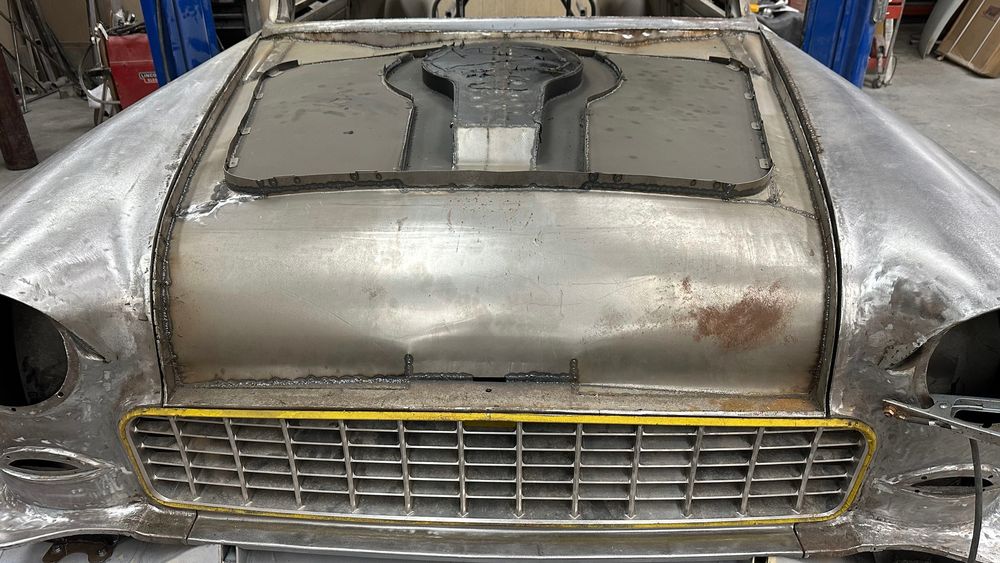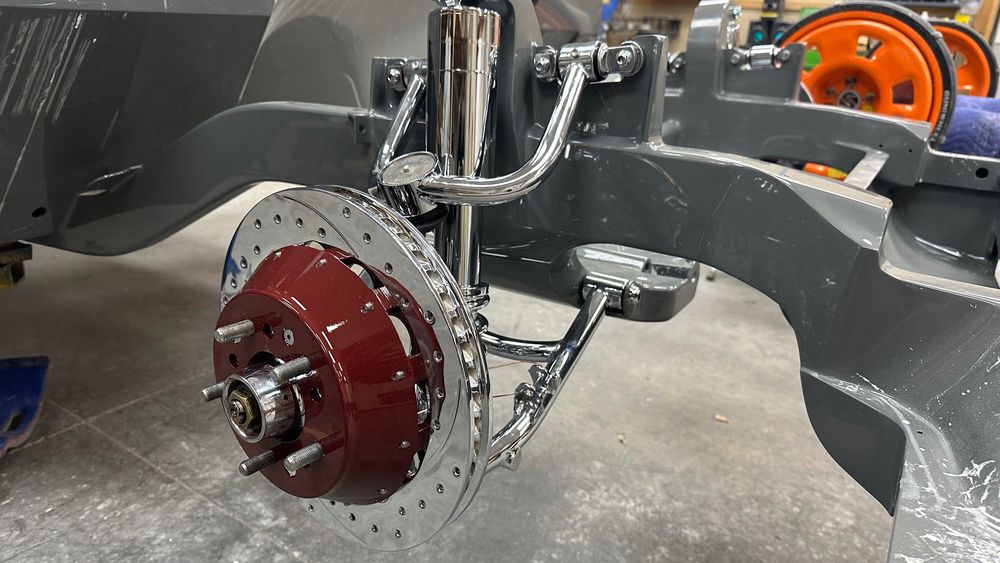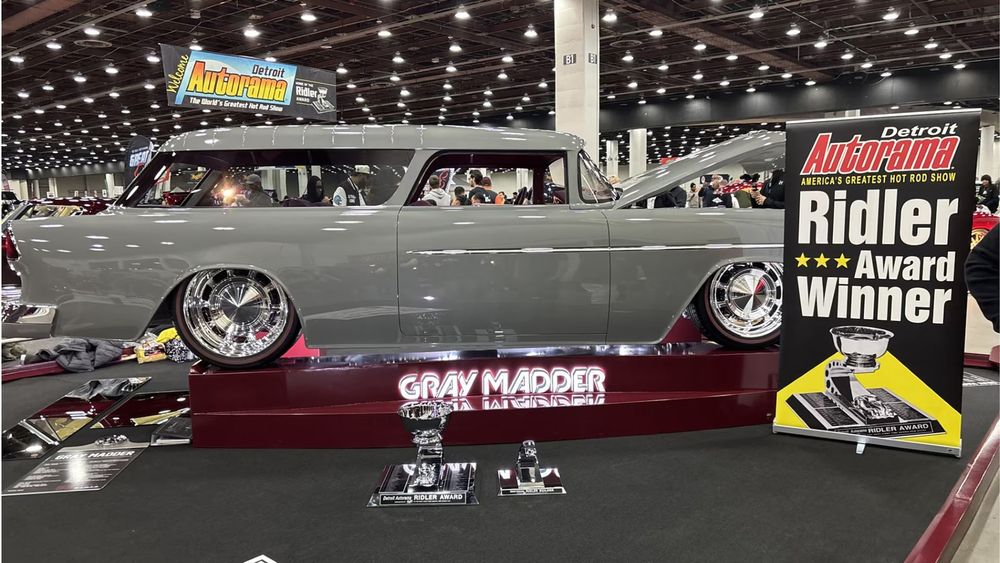Exclusive! Behind the Scenes Building of the 2025 Ridler-Winning 1955 Chevy Nomad Gray Madder
Southern Comfort Customs shows us what went into creating this insanely subtle Ridler winner.
The road to building a Ridler-winning car is a tough one. Many consider the Ridler Award to be the top award for a custom car or truck, and for good reasons. The Ridler Award was started in 1964 at the Detroit Autorama to honor Don Ridler, who died in 1963 and was known for his creativity. Since then, the status of the award—and the build level of the cars—has grown exponentially.
AI Quick Summary
Southern Comfort Customs built the 2025 Ridler-winning 1955 Chevy Nomad "Gray Madder" for Tom, Christy, and Josh Bresnahan. The custom build featured hidden hardware and unique design elements, overcoming challenges like a tight timeline and unforeseen delays to win the prestigious award.
This summary was generated by AI using content from this MotorTrend article
Read Next
0:00 / 0:00
Now sponsored by Meguiar’s, the Ridler has extremely strict rules. The No. 1 rule is that the car must debut at the Detroit Autorama. If the car, or any specific part of the car, is shown even accidentally, then it’s disqualified from competing. A Ridler build can take years, so in the age of social media and phone cameras, one of the biggest challenges is keeping it all on the down low. In fact, even a drawing getting out into the public can cause disqualification! The cars competing are art, but they must start, stop, move forward, and back up under their own power. They also must turn and be driven to the display spot. The first challenge of winning the Ridler is being picked as one of the Great 8 Ridler Finalists. The winner is selected from that exclusive club.
For 2025 the winner of the Ridler was Tom, Christy, and son Josh Bresnahan’s 1955 Nomad called Gray Madder. But before the trophy and big check were presented, the team over at Southern Comfort Customs had to spend years working over the Nomad.
As shop owner Jeff Shores explained to HOT ROD: “I was finishing up a 1955 Chevy Bel-Air for Tom when he called me and said that he had his next project, which was a ’55 Nomad—just the basic roller for me at his house a thousand miles away. So I made some time to go get the car. Once I got the car, Tom booked a flight a came down to the shop and discussed what his plans were for the car at that time, which was to just get a new chassis and build a Nomad that his wife, Christy, could go get groceries in. Before the chassis had even arrived, Tom had changed his mind and decided that he wanted to build a Ridler car.”
Shores went on to explain, “I wanted to create something that still looked like a Nomad to the average guy, but to true car guy, he would notice all the changes and recognize the illusion that the car is chopped and lengthened even though it’s not.”
The biggest challenge was that Shores didn’t want any hardware shown, so every aspect of the build revolved around this central rule. “The first thing I decided to do was make the car a unibody, so all of the original floor was cut out, and the car was channeled down over the new chassis,” Shores said. “We made new inner rockers to set all of my outriggers to and started [making] the floor braces, then cut, bent, and bead rolled all the new inner floorpans. On the bottom side of the floors, we made the second layer of floorpans using the same steps as the first layers, so the car has double-layer floorpans. The tunnel of the car is also double-paneled. Through the center of the tunnels is built-in duct work for the rear of car to have A/C.”
Rather than make the floor completely smooth, Shores opted to let it have some character. With a quick glance, you might think it still rides on a chassis. Every corner of the integrated chassis was reshaped and turned into a flowing radius, and all the suspension mounting points have welded in bungs, so they only have one exposed hardware side, and for that they machined the bolts to have the same design as the Evod wheels.
The overall idea was to modify the car without losing what makes it a Nomad. With the unibody handled, it was time to tackle the outside of the Chevy. “Keeping the hidden hardware in mind, I started moving the doors back. That took 3 inches off the front of the quarter panel and B-pillar. Those 3 inches were then added back to the front fenders. At this point, it was time to think about the hardware, so we re-engineered how the front fenders mounted at the back.”
Now that the back of the fenders were done, it was time to move to the front, where Shores decided to remove the radiator support, reshape the front of the fenders, and make their own custom billet parts such as the grille, turn signal bezel, and headlight buckets to accommodate the custom one-off 9-inch headlights made by Pyramid Optimized Design in Bellingham, Washington.
The next challenge was finding someone to do the machine work. After many failed attempts with machine shops, Bresnahan decided to buy his own machine, and Shores was lucky enough to find Johnothan Phillips, a CNC machinist who became a key part of building the car. Now that the shop had Phillips and a machine, anything they could think of could be done. With a stack of custom billet parts on hand, it was time to finish up the front end so they could build the bumper and lower bumper pan that was designed for airflow to the A/C condenser.
That was just the tip of the customizing iceberg. Shores explained the time-consuming process: “We made the inner fenders part of the outer fender, so they’re all one piece with no seams. All the original side trim was redesigned, scaled down, and recessed into the side of the car. Then we called Ron Davis, and they made up a custom radiator that matches the same arch as the top of the grill, so it all flows together.”
The team wanted a power roll-up window for the rear hatch, so all the stainless steel was ditched. In the end, the easiest path was to go ahead and make a new tailgate from scratch. This meant a custom set of hinges needed to be crafted, as well, but you can’t see them or the wiring because it’s all hidden away. To get the curved glass, they used wooden bucks to form acrylic and then sent that to the custom glass guy. Even the angle of the tailgate has been changed slightly from stock. “Now that the stainless was gone at the back, we got rid of it on the side of the car and around the windshield,” Shores said. “We made a whole new beltline on the car and took all of the glass, moved it toward the outside of the car, and did one-piece side glass and door glass, which we also had to build wooden bucks to send the glass company to form off of. All the stainless is now gone around the windshield, so we decided to change the size and angle of the windshield so we could tuck the windshield wipers under the edge of the roof line without seeing them.”
Related: DIY Bodywork Tips! How to Easily Fill Holes in Your Firewall and Floor
In early 2018, the project was put on hold while both Tom and Christy battled cancer. That pause lasted until 2023, when the couple could once again focus on the Nomad build, this time bringing their son, Josh, into the mix. First up were new mounts for the hydraulic coil-over suspension system. Then it was on to the firewall. “We made it curve around the one-off billet air cleaner, which was designed to look like the original oil bath air cleaner,” Shores said, “and we started making the hood, which is longer both at the front—to accommodate the shorter grill—and at the back to accommodate no longer having a cowl.”
Shores didn’t want just a gas tank like everyone else, so as he laid under the car, his son looked over at our new one-off Evod wheels and custom-made Diamond Back tires as they were leaning up against the wall. “What about a spare tire under the car, but we make it the gas tank?” Shores recalled his son proposing. The disguised gas tank is a solid machined wheel with a real tire mounted that actually holds air. At this time, Tom decided that he would like to help work on the car, so Shores agreed that if he wanted to help, they would find something he could do to move the project along. The first time Tom came down, he started grinding the motor and transmission to smooth it up and get rid of casting marks. Tom spent the whole month, seven days a week, grinding on his motor and transmission.
After months of work, the car was finally ready for paint, followed by months of wet sanding and buffing the car. When it was time for the final assembly of the car, they remembered they still had not received the grille back from the chrome shop and needed it before any of the front end could go together. At this point, Tom decided to make another trip down to help with the car; this time he was there to do whatever he was told and just wanted to help make progress. Time was ticking, and they still didn’t have a grille back, as it was hard for the chrome shop to pull the chrome all the way through the 3-inch-deep pockets. Weeks went by as the team waited for the call that the grille was done. Finally, they got the call that the grille was ready; Tom and Christy jumped into their car to go pick it up as soon as possible so Shores and his team could finish putting it all together.
Related: What Is an Angle Grinder, and How Can It Help Your Metal Fabrication Work?
A glass issue really upped the stress levels, and the new glass for the entire car didn’t show up until the Saturday before the show. The whole week before the show was a flurry of activity with the guys in the shop getting less than 10 hours of sleep. Even getting the display to the show was a challenge because it wouldn’t fit in the trailer with the car. Sure enough, the U-Haul wouldn’t start the next day, so eight hours later they had another truck, and the clock just kept on ticking.
“We had no room for error because it was a 12-hour drive to Detroit, so all three of us squeezed into the U-Haul and hit the road,” Shores said. “We were only an hour away when our brand-new Kaufman trailer sheared a wheel off and sent us to the side of the road for four hours. Finally, we found a shop that would fix it without having to unload the car on the side of the highway. After a whole new hub was installed on the trailer, we were back on the road to Detroit, showing up an hour after our scheduled move-in time, but the show employees were very understanding and let us right in. We unloaded the car, had it all set up on the display, and then we buffed and cleaned on the car for the rest of Wednesday and all day Thursday to get it perfect for the judges and spectators on Friday morning.”
Finally, it was Sunday, the big day everyone had been waiting for. As the team at Southern Comfort Customs, the car’s owners, and family/friends of Gray Madder waited for the announcement, they knew they had a strong car, but they were competing against other nice cars built by well-known shops. When the 1955 Nomad Gray Madder came across the screen as the winner, there was no better feeling. They had done it. The team built the 2025 Ridler winner, the most prestigious award in the car/hot rod world. “We knew from the start that is what we were coming to do,” Shores recalled. “But everyone else there had the same thoughts in their mind. Owners Tom, Christy, and Josh couldn’t have been happier with the car or how it turned out, and the team at Southern Comfort Customs & Interiors were more than a little happy, as well. A big thanks to everyone involved with the Detroit Autorama; it was an honor being there and having the winning car of 2025.”
Photography by Jeff Shores
Born and raised in Southern California I started as the technical editor for Popular Hot Rodding (PHR) magazine where I learned the business before moving over to work with Nick Licata, at Camaro Performers, as his tech editor. At PHR I built a 1968 Camaro called Bad Penny that was one of the earlier pro-touring cars that actually ran the track hard. We won the first Optima Ultimate Street Car Invitational in 2008 and placed well several other years. At Camaro Performers we started several project cars and did a ton of tech. Eventually I was made editor of Vette magazine for a short time before being slotted to run Super Chevy magazine. Running the brands was fun, but I've always enjoyed being a technical writer more. So after more than 15 years I'm back to writing tech content, this time for the HOT ROD network. I enjoy being with my family, shooting, and working on my latest car, a 1969 Camaro called Tri Tip.
Read More
